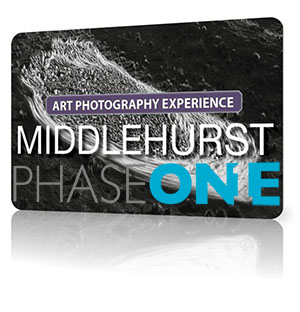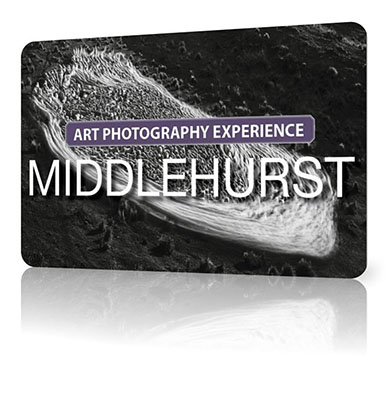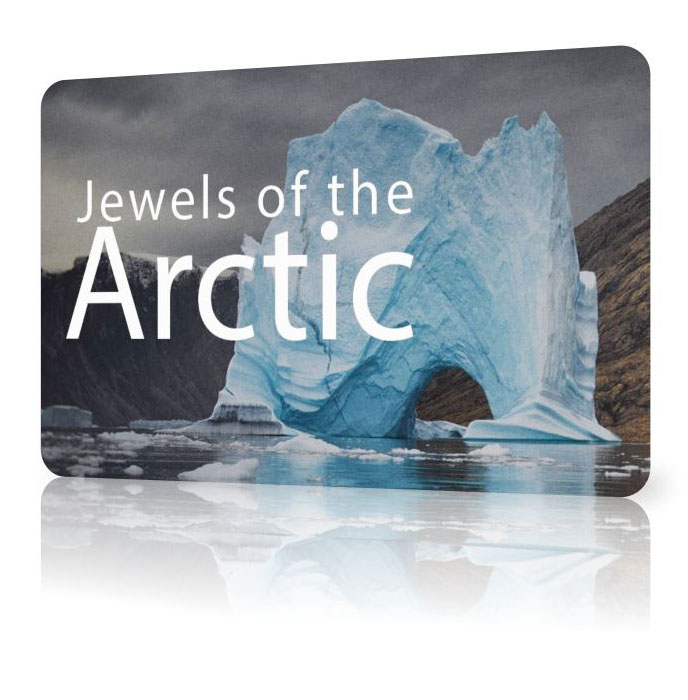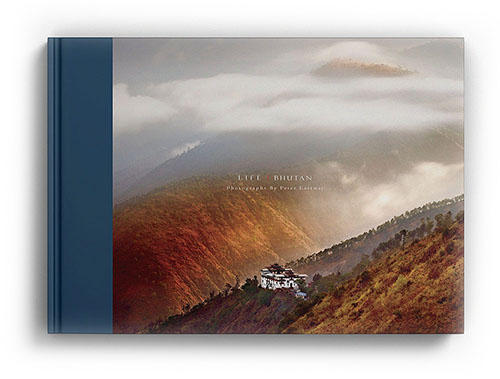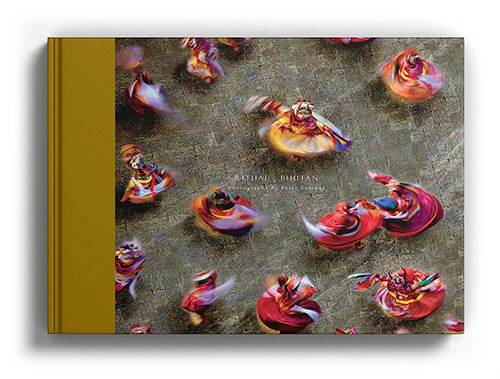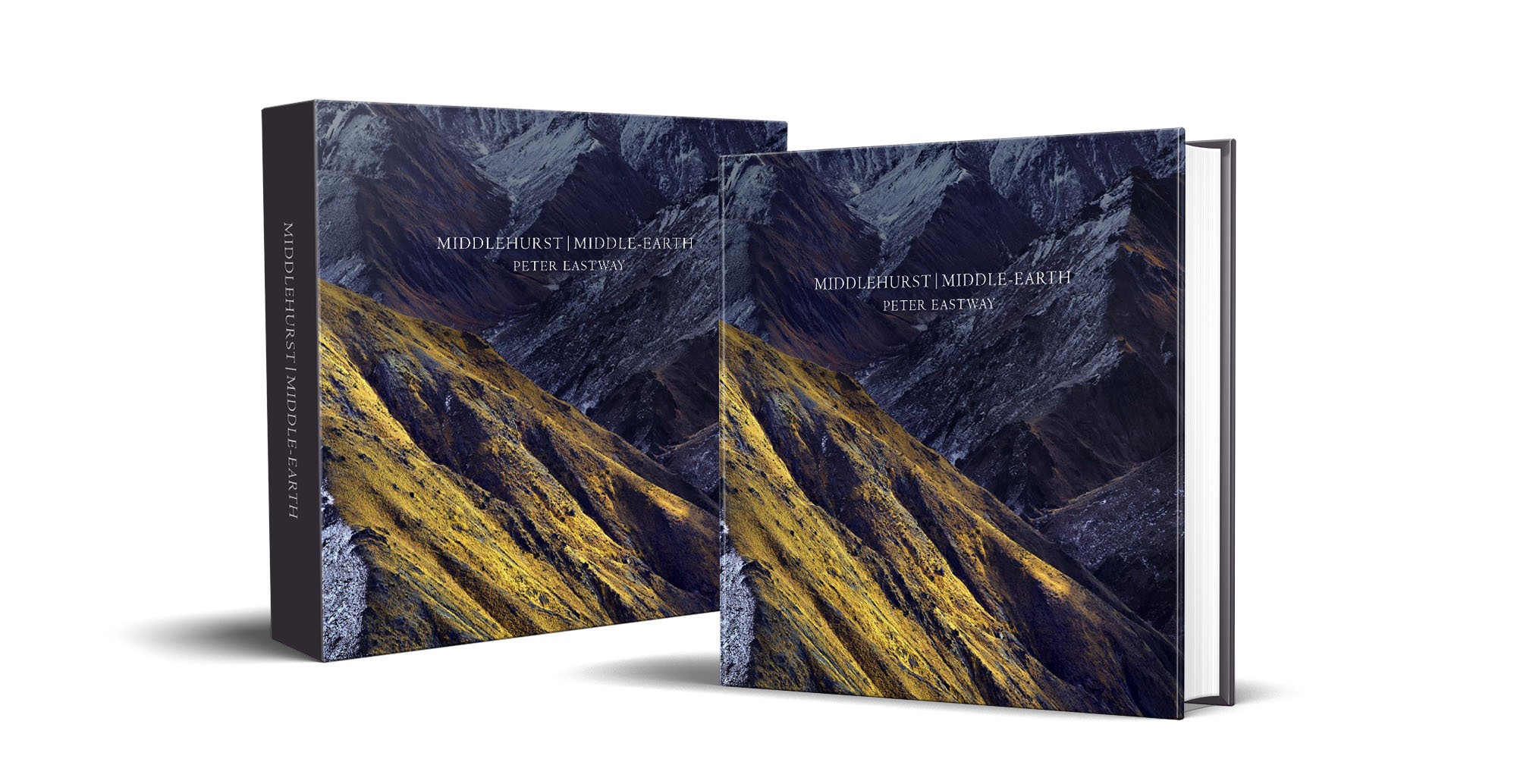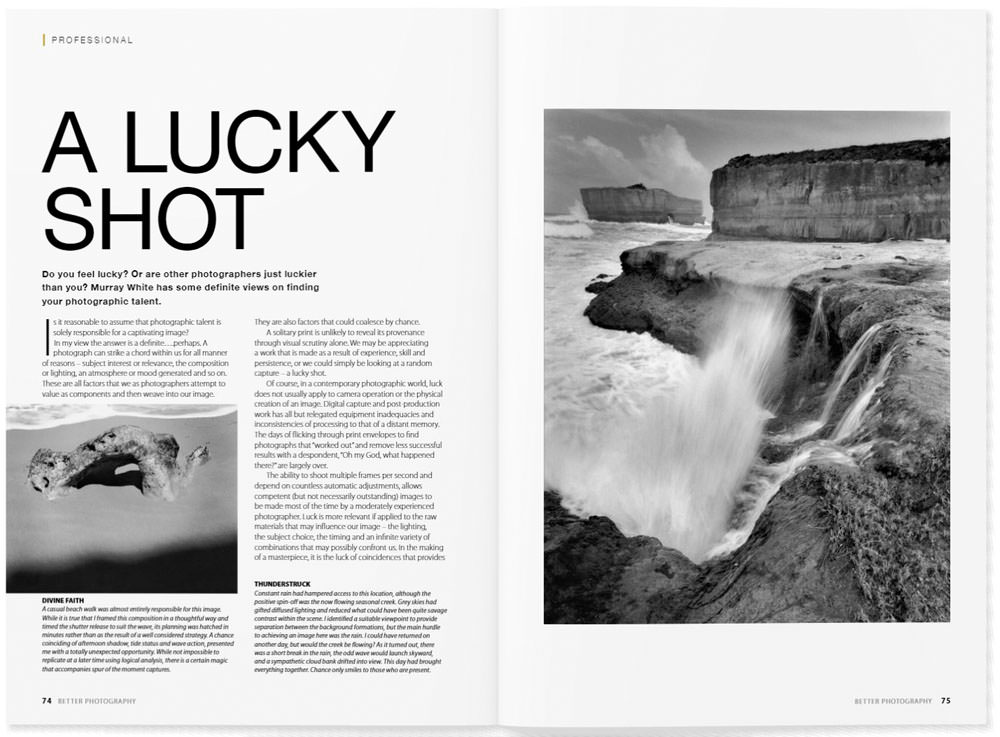Writes Murray White, "Is it reasonable to assume that photographic talent is solely responsible for a captivating image? In my view the answer is a definite….perhaps. A photograph can strike a chord within us for all manner of reasons – subject interest or relevance, the composition or lighting, an atmosphere or mood generated and so on.
These are all factors that we as photographers attempt to value as components and then weave into our image. They are also factors that could coalesce by chance. A solitary print is unlikely to reveal its provenance through visual scrutiny alone. We may be appreciating a work that is made as a result of experience, skill and persistence, or we could simply be looking at a random capture – a lucky shot.
Of course, in a contemporary photographic world, luck does not usually apply to camera operation or the physical creation of an image. Digital capture and post-production work has all but relegated equipment inadequacies and inconsistencies of processing to that of a distant memory.
The days of flicking through print envelopes to find photographs that “worked out” and remove less successful results with a despondent, “Oh my God, what happened there?” are largely over. The ability to shoot multiple frames per second and depend on countless automatic adjustments, allows competent (but not necessarily outstanding) images to be made most of the time by a moderately experienced photographer. Luck is more relevant if applied to the raw materials that may influence our image – the lighting, the subject choice, the timing and an infinite variety of combinations that may possibly confront us.
In the making of a masterpiece, it is the luck of coincidences that makes the difference? To read Murray's thoughts, grab the current issue of Better Photography (Issue 107). Click on the link below to subscribe - plus you get immediate access to over 50 back issues full of super informative material and inspirational ideas! Use coupon code BP40 to get 40% off - just $29.88 for an annual subscription.










